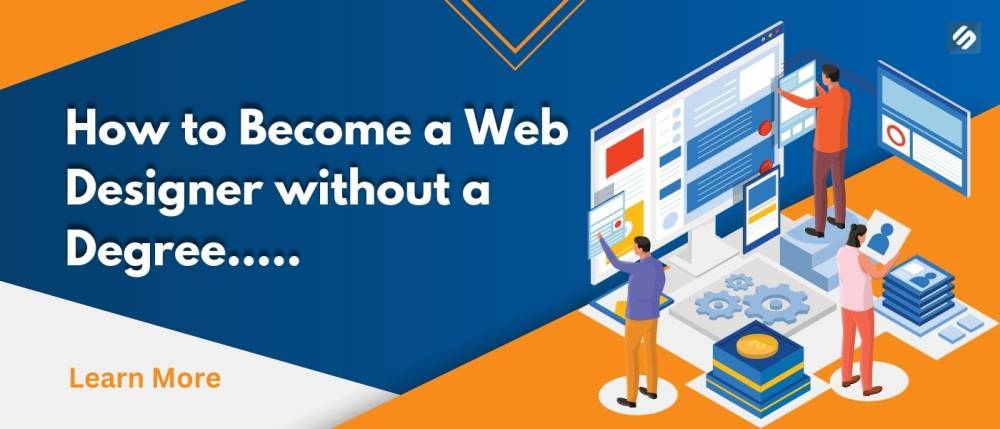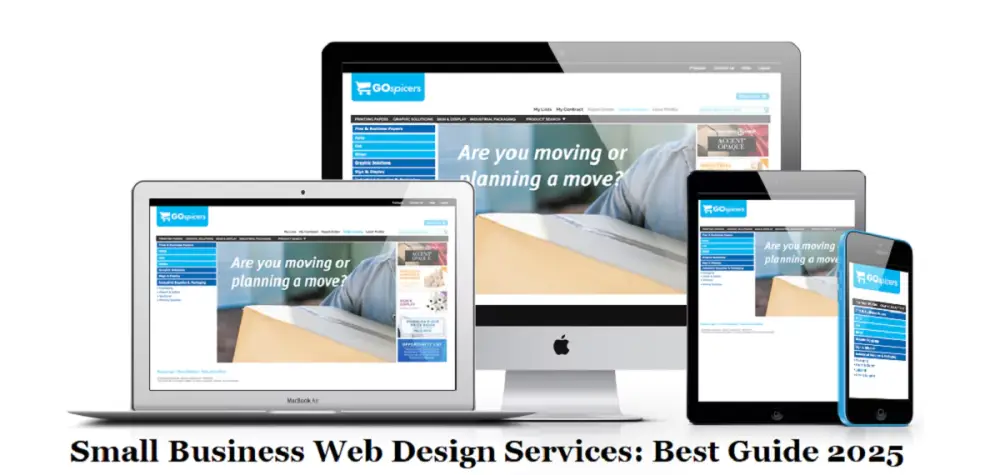When considering a career as a web designer, many budding professionals become discouraged by the thought that a degree is necessary for success. It is true that some employers require degrees for certain roles, but many are willing to hire talented non-degree holders for web design positions.
With the right knowledge and hard work, you can become a successful web designer without a degree. However, for many, entering this field often requires obtaining formal education, such as an Associate’s or Bachelor’s degree.
Web design training and qualifications are becoming increasingly necessary to compete in today's job market. However, there are still countless people who have been able to launch successful web design careers without a formal degree.
This article explores the options available to web designers who do not have a degree but are determined to make a career in the field. We outline ways you can diplomatically demonstrate your skills to employers, the key skills you need to acquire for success, and offer tips on the path to becoming a successful web designer without holding a formal qualification.
With the right approach and dedication, you will discover that the benefits of becoming a web designer can far outweigh the lack of degree-level qualifications.
What is Web Design?
Web Design is the process of designing and developing websites. It involves creating designs, structuring content, writing meta descriptions, and coding the website, while ensuring that the design will display properly on all devices. Web Designers must think critically about how to optimize their websites for search engine optimization (SEO) in order to get the highest visibility in search engine results.
Additionally, they must take into consideration various aspects of website optimization such as page load times, navigation, and usability in order to provide a better user experience.
Web Designers must also understand the importance of website security and must be aware of how to implement security measures such as SSL certificates in order to keep the website safe and secure. Moreover, they must also be familiar with creating featured snippets to increase website visibility in search engine results.
All of these components come together to create a beautiful, functional, and secure website that provides a great user experience.
What is a Web Designer?
A Web Designer is an individual who specializes in creating and developing websites. They are responsible for creating designs that are user-friendly, visually compelling, and easy to navigate. Web Designers are also responsible for optimizing websites for search engine optimization (SEO). To do so, they must think critically about how to organize and structure content and write good meta descriptions so that website content is discoverable in search engine results pages.
Additionally, web designers are also responsible for creating websites that are optimized to be viewed on different devices. This requires an understanding of the capabilities of each type of device and knowing how to create designs that display properly on specific devices. The goal is to create a consistent website experience across all devices, ensuring that content is easy to find and read, regardless of what device is being used.
In some cases, web designers may be asked to create a design mockup for approval. They would then use their knowledge of HTML, CSS, JavaScript, and other graphical design technologies to turn the approved design into a functioning website. This involves coding, debugging, optimizing, testing, and publishing the website.
Web Designers must also be able to implement best practices to ensure that their websites are optimized for speed and usability. This includes making sure that websites are designed and developed so that page load times are minimal, navigation is intuitive, and content is easily accessible. Web Designers must also understand how to create and optimize layouts so that content is displayed quickly and with a minimum of effort. Additionally, they must be aware of how to create featured snippets and use them to increase website visibility in search engine results.
Finally, Web Designers must always be mindful of the importance of website security. They must be sure to consider how to implement site security measures, such as SSL certificates, to make sure that their websites are secure and protected from malicious activity. This is especially important when the website contains sensitive information, such as customer data and passwords.
Learning Web Design Processes
Understand UX/UI Design Principles
UX (user experience) and UI (user interface) design principles are essential to a successful web design. As a web designer, you must understand the importance of creating websites with the user in mind, taking into account navigation, content structure, usability, and accessibility.
Find Resources to Help Guide You Through the Design Process
Utilizing resources, such as web design templates, guides, tutorials, and blogs, can be incredibly useful when starting out in the field and going through the process of creating a website.
Become Proficient in Design Tools and Software
It is important to become proficient with a variety of web design tools and software in order to produce quality websites. Learning the basics of programs such as Adobe Creative Suite, Sketch App, and Figma will be beneficial for any web designer.
How to Become a Web Designer without a Degree
Becoming a web designer without a degree requires hard work, dedication, and self-discipline. Here are a few tactics one can use to launch a successful web design career.
Encouragement
For those considering taking the plunge into becoming a web designer without a degree, it is important to remember that it will take hard work and determination to succeed. But with the right tools and resources, the goal of launching a successful web designing career can be achieved. Therefore, it is important to take the necessary steps to ensure success, such as learning technical skills, gaining experience, and joining professional or networking groups.
Research the web Design Field
It is important to dedicate time to researching the web design industry. Taking the time to understand current trends, technologies, and business models, as well as learning the fundamentals, will set you up in the best position to start a career. Learning industry terms, comprehending UX/UI (user experience/user interface) design principles, and researching the different types of coding languages are all some of the basics you should understand.
Become Familiar with Terminology Skills, Tools
In addition to researching the field, one must become familiar with certain skills and tools in order to succeed as a web designer. HTML and CSS are two of the main coding languages used to design web pages, and a thorough understanding of both is key. It is also important to gain an understanding of user experience (UX) and user interface (UI) design principles. Familiarizing yourself with specific tools used to create websites is also essential in the web design industry, such as WordPress, Adobe Creative Suite, and Sketch App, to name a few.
Get Knowledge of Current Trends in Web Design
Once you have gained an understanding of the fundamentals of web design and the tools used, it is important to stay informed of current trends in order to stay competitive. Changes in technology, as well as user preferences, are constantly evolving, and staying up to date with trends is essential. This may include trying new coding languages, exploring techniques used to enhance user experience, or discovering ways to incorporate new trends in design.
Research the Different Types of Web Design Languages
One must be familiar with a variety of web design coding languages in order to become a successful web designer. After understanding the basics of HTML and CSS, it is important to build up knowledge of other languages such as JavaScript, SQL, PHP, and Python.
Learn the Fundamentals
The next step is to learn the fundamentals of web design. This includes topics such as color theory, typography, user experience (UX) design principles, and even basic animation. You should also familiarize yourself with popular content management systems (CMS) such as WordPress and Joomla. Additionally, it’s important to get familiar with popular photo and graphic editing software including Adobe Photoshop and Adobe Illustrator. There are many resources available online to help you learn these skills, such as Udemy or Code Academy.
Brush up on Your HTML/CSS/JavaScript Skills
A basic understanding of HTML, CSS, and JavaScript is essential for any web designer. HTML is a markup language used in web design to structure the content on a website, while CSS is used to style and customize the layout and look of a website. JavaScript is a scripting language that allows for the addition of interactivity and functionality to websites and is necessary for website optimization and dynamic content.
Visual Design
Visual design is the process of combining the elements of design (typeface, colors, texture, alignment, spacing) to create an emotional response in users. To become a successful web designer, it is important to have a good knowledge of the basic principles of visual design.
Interaction Design
Interaction design − also known as user experience design − is the process of creating digital experiences that are intuitive and easy to use. As a web designer, you must understand how best to create user-friendly interfaces and experiences.
UX Testing
As a web designer, you must understand how to test your products with users in order to understand how effective your design is. UX testing allows you to make data-driven decisions that will improve the user experience.
Content Strategy
Content strategy is the process of planning, developing, and managing content for a website. As a web designer, you must be able to plan, manage, and update the content on a website in order to create an effective user experience.
Learn Familiar with Content Management Systems
Content Management Systems (CMS) are web-based applications that allow for content creation, editing, and publishing. The most popular CMS is WordPress, and while a web designer does not need to know how to code WordPress themes and plugins, it is beneficial to understand the platform in order to design and launch websites for clients. You should learn them properly.
Why Do Some Employers Require Degrees for Web Designers?
Many employers require job applicants for web design roles to have specific qualifications. A few reasons employers seek these qualifications include the following:
-
Demonstrates a level of commitment to the profession. A degree shows that the job applicant has taken the time and made the financial and personal commitment to remain focused and dedicated to web design.
-
Establishes a level of technical competence. A degree provides proof that the job applicant has acquired professional web design qualifications, providing employers with greater assurance that the job applicant can hit the ground running in the role.
-
Demonstrate a level of general knowledge. A course of study in web design also touches on wider topics, such as coding, digital marketing, and other disciplines related to web design. Holding a degree demonstrates knowledge within a broad range of subjects to recruiters.
Although most employers in the web design industry prefer to hire web designers with a degree, there is hope for those without a degree. By demonstrating expertise and skills in web design, and managing the expectation that you may not have a degree, you can create a portfolio that employers may find appealing.
The Benefits of Having a Degree
Having a degree offers more reliability for job security and better opportunities than someone without a degree. Degree holders tend to earn more money for their efforts, which equates to greater employment security and better future prospects.
More Reliability
Having a degree demonstrates a level of dedication and commitment. Employers prefer candidates with a degree because they are more reliable and have proven their ability to commit to a long-term project. This reliability transcends to the individual, making them more attractive to the employer and increasing their chances of job security.
Additionally, having a degree bolsters an individual's credentials. It provides a sense of credibility and a greater ability to secure better job opportunities. Degree holders often have a competitive edge over less academically qualified candidates.
Better Opportunity
Having a degree can open up opportunities that are not available to those without one. Degree holders are more likely to be considered for management positions or executive roles, as these roles usually require a higher level of education. Degree holders may also have access to more training opportunities and can experience a faster career progression compared to those without a degree.
Moreover, many employers offer preferential treatment to those who hold a degree. This could mean more flexible working arrangements, better salary, and increased potential for personal and professional development.
Greater Employment Security
Having a degree provides greater employment security than those without one. This is because degree holders tend to have better job prospects and more reliable income than those without a degree.
In addition, many employers require a degree for certain jobs, meaning those without a degree may not even be able to apply for certain positions. Having a degree can put job seekers ahead of the competition when it comes to applying for jobs and can reduce the amount of time spent looking for work.
The bottom line is, having a degree can bring more stability, reliability, and security to an individual's career. It opens up more job opportunities, increases chance of getting a higher-paid job, and can maximize the job seeker's potential. A degree is an investment that will pay off in the long run.
How to Showcase Web Design Skills Without a Degree
If you do not have a degree, the key to success in the web design industry is to be able to showcase your skills. Below are some suggestions on how to do so.
Create a portfolio website: A website becomes your primary way to showcase your professional accomplishments and demonstrate proficiency with web design. You should include your best or most creative work on your website and ensure that it follows the same design of the existing websites in your portfolio.
Incorporate feedback from employers, peers, and clients: Gather feedback from your previous employer, peers, and clients so that you can tell the story of your success. You can contribute this feedback to the portfolio website as testimonials, which will support your candidacy.
Optimize for on-page and featured snippets strategies: Use strong SEO tactics to ensure your portfolio website is highly visible in major search engine results. Additionally, strategize around featured snippet usage to make sure the most visible information on the SERP is your portfolio’s highlight reel.
Use social media to your advantage: Leverage your presence on social media platforms (Facebook, Twitter, LinkedIn, etc.) to advertise your portfolio and promote your services as a web designer. Your connections can help you reach potential employers and share your portfolio with the public.
Developing Your Portfolio
Create and Publish Your Own Website
Creating a portfolio website is the best way to showcase your work and make it available to potential clients. Building your own website will also provide the opportunity to show off your HTML/CSS skills as well as utilize different design software and tools.
Contribute to Open-Source Code
Contributing to open-source code is an easy way to demonstrate your coding abilities and draw attention to your portfolio. Open-source code allows for collaboration on projects with other developers and can be a great way to give back to the web design community.
Take On Freelance Work
Freelance web design work can be obtained through platforms such as Upwork and Fiverr. Working on freelance projects gives you the chance to apply your skills, create a portfolio, and gain a client list. Working with clients also provides valuable experience in the industry.
Tips for Becoming a Successful Web Designer
With the right skills and access to the resources available, you can become a successful web designer without a degree. Here are some tips to keep in mind:
- Join professional or networking groups. Finding a mentor or working in a network of professionals will provide greater insight into web design. Developing relationships within the industry through networking groups or meet-ups will provide resources and peers to help you learn and grow.
- Refine your design processes. Continually refine and improve your design processes with new tools, techniques, and methods. As web design evolves, you must stay on top of the trends and ensure you are creating the best user experiences for your clients.
- Utilize the power of social media. Promote yourself and your portfolio on social media platforms such as Twitter, Facebook, and LinkedIn. Engage with peers and clients in order to show off your skills and reach the right people.
Conclusion
In conclusion, it is possible to become a successful web designer without a degree, as long as you have the right resources, ambition, and determination. By following the necessary steps, such as identifying the skills needed, learning the fundamentals, building a high-quality portfolio, and joining a professional network, staying up-to-date on the latest trends, and marketing yourself, you can be successful in this field without a degree.
Additionally, although a degree can be beneficial, it is not necessary to become a successful web designer. There is no “one size fits all” approach to becoming a successful web designer without a degree. However, following the tips outlined in this article will give you a head start in the industry, and you will soon find yourself well on the road to success. Good luck!




